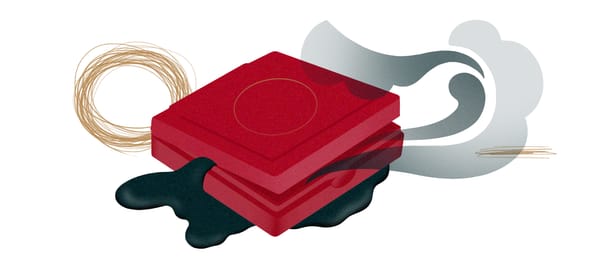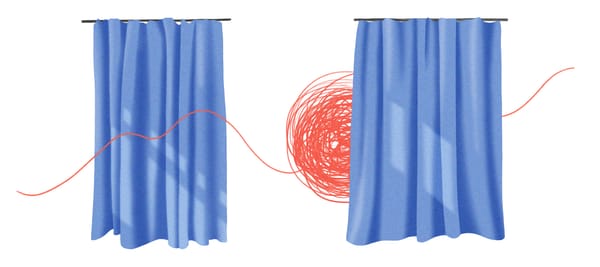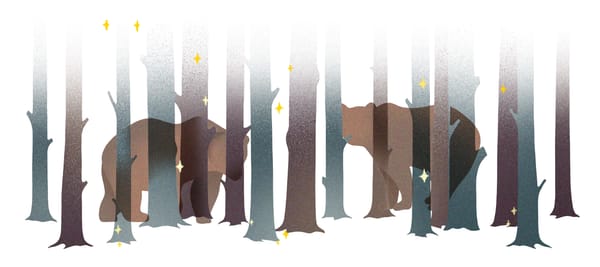Bluegrass & Fescue
by Sonya Huber | A history of invasions.

In the heat of August 2014, the acre or so of fescue and Kentucky bluegrass surrounding St. Nicholas Antiochian Orthodox Church in Bridgeport, Connecticut, was mostly dried to the color of bone. I was here because I’d given myself an assignment: to walk the 7.3-mile municipal boundary between the faded industrial city of Bridgeport and the upscale suburb of Fairfield, one end of the Gold Coast, with the hedge-fund wealth of Greenwich at the other. I didn’t know how else to write about this chasm of numbers and decisions and history that had created one of the sites of greatest inequality in the nation. I thought this walk would take a summer, not knowing it would stretch into a decade of walking and research on, around, and about the jagged boundary that wends southward to end at the Long Island Sound.
It was days after police shot and killed an eighteen-year-old boy, Michael Brown, and the rebellion exploded. I sat on a stone bench in the shade of a maple, scrolling through Twitter on my phone. Activists taking shelter in a church in Ferguson, Missouri, gave terse updates, posted photos of smoke and flame, and asked for donations for milk and water to flush the tear gas from their eyes. I sent money via my phone, looking down at the dried bluegrass and fescue at my feet. In the coming years, I would realize that the grass told the story of inequality and segregation. Seeds from some of these grasses arrived here in the 1600s in the bellies of English settlers’ cattle and sheep, along with white clover, ragweed, nightshades, and stinging nettles. The livestock roamed in widening circles, chewing soft, green plants that had never known those hard, white teeth, sowing behind them in the rich loam the hardier, invasive European grasses in a process called “botanical colonization.”1 The milk and meat from those cattle fueled large settler families, with each child wanting more land.2
I got up and walked across the dry lawn, beneath the seven-pointed leaves of a native sweetgum tree, to Park Avenue where the municipal boundary began.
English settlers formed this line with a million footsteps and words and gestures, pushing it into existence from either side. The line, as all such lines do, records a compromise between opposing threats, each an idea of a claim justified with audacious violence. Linda Tuhiwai Smith calls such lines a “very specific spatial vocabulary of colonialism,”3 each one a commercial artifact and a weapon. Colonists drew them as lines of death: threatening out-of-town wanderers,4 prohibiting passage of any enslaved Black person or any unauthorized guest,5 and awarding themselves the right to “shoot any Indian who appeared” across their lines—ancestors of the stand-your-ground laws that still allow white residents in this country to kill with impunity.
Settlers from Fairfield pushed the Paugussett people eastward over this line in 1656, paying the settlers in present-day Bridgeport twelve British pounds plus sacks of wheat and peas to take their Indigenous population off their hands. Settlers here then drew lines around an eighty-acre plot in which to contain the Paugussett people,6 one of the first reservations on the land that would become the United States. Settlers across New England repeated this ritual of drawing lines that could not be crossed, creating a system of land transactions that formed the industry of real estate.7
The fescue and the bluegrass, prized for their tendency to propagate and to choke out other plants, spread in dense mats that became vast tracts of sheared lawn, even and silent. White people with wealth founded on lines and land moved westward, forming cities and suburbs they scored with more lines, then abandoning the messes they made. Easy low-cost loans from the US government lured more white people to acquire suburban lawns of their own.
Zoning laws kept out anyone who could not afford the pantomime of farming such a dear and useless crop. Down the coast in Greenwich, populated with the heirs of Morgan and Rockefeller fortunes, the Real Estate Board gathered for its first banquet in 1924, celebrating the town’s status as the wealthiest per capita in the world.8 These lawns and lines created places like St. Louis and its suburbs, built with restrictive covenants and zoning, which together made “a national laboratory of residential segregation.”
Black people searched for places to live that weren’t crumbling from decades of neglect and moved into places like Ferguson, a near-suburb of St. Louis. Michael Brown’s life was enclosed, encircled, by the lines around and within Ferguson and the smaller squares set aside for a concentration of low-income apartments like the private complex of Canfield Green Apartments, built in the 1970s as the US public housing system was underfunded to the point of neglect. This man-made hyper-concentration of poverty drew the police with itchy trigger fingers to monitor lines and boundaries.9 And so fires burned, and protests flared, and milk was spilled, and water was trucked in, and gas and smoke were launched to contain the protestors inside the police barricades.
Similar barriers stood along Park Avenue, marking out danger: a construction site for a new university building that would eventually bear silver letters honoring Jack Welch, former CEO of GE and master of downsizing and corporate raiding. There were no sidewalks, nor was there any curb, so I walked a block south, where the homeowner of a modest house covered in aluminum siding had erected a five-foot-tall carved mailbox post in the shape of Uncle Sam, the bearded icon with white-and-red-striped top hat and pants and a suit coat of blue covered with white stars.
In the coming years, protest marches would wend across this landscape. A Black Lives Matter march threaded through the exclusive town of Weston down on the Gold Coast in 2020. Eight days later,10 that town approved a plan to keep zoning restrictions in place that limited most of the town to single-family homes on two or more acres of expensive real estate. To retain its lawns.
Sonya Huber is the author of eight books, including the essay collection Love and Industry: A Midwestern Workbook, the writing guide Voice First: A Writer’s Manifesto, the award-winning essay collection on chronic pain Pain Woman Takes Your Keys, and the activist memoir-in-a-day Supremely Tiny Acts. She teaches at Fairfield University and in the Fairfield low-residency MFA program. More at sonyahuber.com.
This essay is a Short Reads original.
A huge THANK YOU 💛 to the 35 readers who became supporting subscribers over the weekend! We feel loved.






